+ データを開く
データを開く
- 基本情報
基本情報
| 登録情報 | データベース: PDB / ID: 9sai | ||||||
|---|---|---|---|---|---|---|---|
| タイトル | Ternary PROTAC-mediated complex consisting of Cereblon, DDB1 and BRD4-BD1, non-covalently linked by JQ1-AcN | ||||||
 要素 要素 |
| ||||||
 キーワード キーワード | LIGASE / ternary complex / PROTAC / cereblon | ||||||
| 機能・相同性 |  機能・相同性情報 機能・相同性情報negative regulation of monoatomic ion transmembrane transport / positive regulation by virus of viral protein levels in host cell / spindle assembly involved in female meiosis / epigenetic programming in the zygotic pronuclei / UV-damage excision repair / biological process involved in interaction with symbiont / regulation of mitotic cell cycle phase transition / WD40-repeat domain binding / Cul4A-RING E3 ubiquitin ligase complex / Cul4-RING E3 ubiquitin ligase complex ...negative regulation of monoatomic ion transmembrane transport / positive regulation by virus of viral protein levels in host cell / spindle assembly involved in female meiosis / epigenetic programming in the zygotic pronuclei / UV-damage excision repair / biological process involved in interaction with symbiont / regulation of mitotic cell cycle phase transition / WD40-repeat domain binding / Cul4A-RING E3 ubiquitin ligase complex / Cul4-RING E3 ubiquitin ligase complex / Cul4B-RING E3 ubiquitin ligase complex / ubiquitin ligase complex scaffold activity / negative regulation of reproductive process / negative regulation of developmental process / locomotory exploration behavior / RNA polymerase II C-terminal domain binding / cullin family protein binding / P-TEFb complex binding / viral release from host cell / negative regulation of DNA damage checkpoint / histone H4 reader activity / host-mediated suppression of viral transcription / positive regulation of G2/M transition of mitotic cell cycle / positive regulation of Wnt signaling pathway / ectopic germ cell programmed cell death / positive regulation of T-helper 17 cell lineage commitment / negative regulation of protein-containing complex assembly / positive regulation of viral genome replication / proteasomal protein catabolic process / : / positive regulation of gluconeogenesis / RNA polymerase II CTD heptapeptide repeat kinase activity / condensed nuclear chromosome / transcription coregulator activity / nucleotide-excision repair / positive regulation of protein-containing complex assembly / positive regulation of transcription elongation by RNA polymerase II / Recognition of DNA damage by PCNA-containing replication complex / regulation of circadian rhythm / DNA Damage Recognition in GG-NER / Dual Incision in GG-NER / Transcription-Coupled Nucleotide Excision Repair (TC-NER) / Formation of TC-NER Pre-Incision Complex / Formation of Incision Complex in GG-NER / Wnt signaling pathway / Dual incision in TC-NER / Gap-filling DNA repair synthesis and ligation in TC-NER / positive regulation of protein catabolic process / cellular response to UV / p53 binding / rhythmic process / chromosome / site of double-strand break / Neddylation / regulation of inflammatory response / ubiquitin-dependent protein catabolic process / protein-macromolecule adaptor activity / histone binding / Potential therapeutics for SARS / proteasome-mediated ubiquitin-dependent protein catabolic process / damaged DNA binding / transmembrane transporter binding / transcription coactivator activity / chromosome, telomeric region / positive regulation of canonical NF-kappaB signal transduction / transcription cis-regulatory region binding / protein ubiquitination / chromatin remodeling / DNA repair / protein serine/threonine kinase activity / apoptotic process / DNA damage response / chromatin binding / regulation of transcription by RNA polymerase II / negative regulation of apoptotic process / chromatin / positive regulation of DNA-templated transcription / protein-containing complex binding / nucleolus / perinuclear region of cytoplasm / enzyme binding / positive regulation of transcription by RNA polymerase II / protein-containing complex / extracellular space / DNA binding / extracellular exosome / nucleoplasm / metal ion binding / nucleus / membrane / cytoplasm / cytosol 類似検索 - 分子機能 | ||||||
| 生物種 |  Homo sapiens (ヒト) Homo sapiens (ヒト) | ||||||
| 手法 | 電子顕微鏡法 / 単粒子再構成法 / クライオ電子顕微鏡法 / 解像度: 2.66 Å | ||||||
 データ登録者 データ登録者 | Fischer, G. / Peter, D. / Arce-Solano, S. / Kessler, D. | ||||||
| 資金援助 | 1件
| ||||||
 引用 引用 |  ジャーナル: J Am Chem Soc / 年: 2025 ジャーナル: J Am Chem Soc / 年: 2025タイトル: Enzyme-Activated Sugar-Coated Bifunctional Degraders. 著者: Qian Zhu / Gerhard Fischer / Steven S Cheng / N Connor Payne / Daniel Peter / Alison C Mody / Silvia Arce-Solano / Dacheng Shen / Zhi Lin / Ralph Mazitschek / Dirk Kessler / Christina M Woo /   要旨: Targeted protein degradation with compounds like proteolysis targeting chimeras (PROTACs) directs disease-associated proteins to the E3 ligase ubiquitin-proteasome system for removal. However, ...Targeted protein degradation with compounds like proteolysis targeting chimeras (PROTACs) directs disease-associated proteins to the E3 ligase ubiquitin-proteasome system for removal. However, commonly employed E3 ligases such as cereblon (CRBN) are broadly expressed. To metabolically gate PROTAC activity, we developed an enzymatic activation strategy by integrating an O-GlcNAc modification to the cyclimids, ligands derived from the natural motifs recognized by CRBN. These sugar-coated PROTACs (SCPs) were designed using structural analyses of representative cyclimid degraders complexed with CRBN and target protein BRD4. We found that glycosylation of the cyclimid reduced CRBN binding and complex formation with BRD4 until enzymatic removal of the O-GlcNAc moiety by O-GlcNAcase (OGA). The requirement for enzymatic activation is demonstrated by biochemical binding, cellular degradation, and cell viability assays in engineered and native cell lines. O-GlcNAc is thus an effective mechanism to gate targeted protein degradation modalities that motivates the development of similar strategies to enhance selectivity with other protein modifications. | ||||||
| 履歴 |
|
- 構造の表示
構造の表示
| 構造ビューア | 分子:  Molmil Molmil Jmol/JSmol Jmol/JSmol |
|---|
- ダウンロードとリンク
ダウンロードとリンク
- ダウンロード
ダウンロード
| PDBx/mmCIF形式 |  9sai.cif.gz 9sai.cif.gz | 282.1 KB | 表示 |  PDBx/mmCIF形式 PDBx/mmCIF形式 |
|---|---|---|---|---|
| PDB形式 |  pdb9sai.ent.gz pdb9sai.ent.gz | 表示 |  PDB形式 PDB形式 | |
| PDBx/mmJSON形式 |  9sai.json.gz 9sai.json.gz | ツリー表示 |  PDBx/mmJSON形式 PDBx/mmJSON形式 | |
| その他 |  その他のダウンロード その他のダウンロード |
-検証レポート
| 文書・要旨 |  9sai_validation.pdf.gz 9sai_validation.pdf.gz | 1.6 MB | 表示 |  wwPDB検証レポート wwPDB検証レポート |
|---|---|---|---|---|
| 文書・詳細版 |  9sai_full_validation.pdf.gz 9sai_full_validation.pdf.gz | 1.7 MB | 表示 | |
| XML形式データ |  9sai_validation.xml.gz 9sai_validation.xml.gz | 50 KB | 表示 | |
| CIF形式データ |  9sai_validation.cif.gz 9sai_validation.cif.gz | 74 KB | 表示 | |
| アーカイブディレクトリ |  https://data.pdbj.org/pub/pdb/validation_reports/sa/9sai https://data.pdbj.org/pub/pdb/validation_reports/sa/9sai ftp://data.pdbj.org/pub/pdb/validation_reports/sa/9sai ftp://data.pdbj.org/pub/pdb/validation_reports/sa/9sai | HTTPS FTP |
-関連構造データ
| 関連構造データ |  54691MC  9safC  54890  54891 M: このデータのモデリングに利用したマップデータ C: 同じ文献を引用 ( |
|---|---|
| 類似構造データ | 類似検索 - 機能・相同性  F&H 検索 F&H 検索 |
- リンク
リンク
- 集合体
集合体
| 登録構造単位 | 
|
|---|---|
| 1 |
|
- 要素
要素
| #1: タンパク質 | 分子量: 50559.559 Da / 分子数: 1 / 由来タイプ: 組換発現 / 由来: (組換発現)  Homo sapiens (ヒト) / 遺伝子: CRBN, AD-006 / 発現宿主: Homo sapiens (ヒト) / 遺伝子: CRBN, AD-006 / 発現宿主:  unidentified baculovirus (ウイルス) / 参照: UniProt: Q96SW2 unidentified baculovirus (ウイルス) / 参照: UniProt: Q96SW2 |
|---|---|
| #2: タンパク質 | 分子量: 93347.078 Da / 分子数: 1 / 由来タイプ: 組換発現 詳細: beta-propeller B removed,beta-propeller B removed,beta-propeller B removed,beta-propeller B removed,beta-propeller B removed,beta-propeller B removed,beta-propeller B removed,beta-propeller B removed 由来: (組換発現)  Homo sapiens (ヒト) / 遺伝子: DDB1, XAP1 / 発現宿主: Homo sapiens (ヒト) / 遺伝子: DDB1, XAP1 / 発現宿主:  unidentified baculovirus (ウイルス) / 参照: UniProt: Q16531 unidentified baculovirus (ウイルス) / 参照: UniProt: Q16531 |
| #3: タンパク質 | 分子量: 15099.380 Da / 分子数: 1 / 由来タイプ: 組換発現 / 由来: (組換発現)  Homo sapiens (ヒト) / 遺伝子: BRD4, HUNK1 / 発現宿主: Homo sapiens (ヒト) / 遺伝子: BRD4, HUNK1 / 発現宿主:  |
| #4: 化合物 | ChemComp-ZN / |
| #5: 化合物 | ChemComp-A1JM3 / 分子量: 723.285 Da / 分子数: 1 / 由来タイプ: 合成 / 式: C35H43ClN8O5S / タイプ: SUBJECT OF INVESTIGATION |
| 研究の焦点であるリガンドがあるか | Y |
| Has protein modification | N |
-実験情報
-実験
| 実験 | 手法: 電子顕微鏡法 |
|---|---|
| EM実験 | 試料の集合状態: PARTICLE / 3次元再構成法: 単粒子再構成法 |
- 試料調製
試料調製
| 構成要素 | 名称: Ternary PROTAC-mediated complex consisting of Cereblon, DDB1 and BRD4-BD1, non-covalently linked by JQ1-AcN タイプ: COMPLEX / Entity ID: #1-#3 / 由来: RECOMBINANT | ||||||||||||||||
|---|---|---|---|---|---|---|---|---|---|---|---|---|---|---|---|---|---|
| 分子量 | 実験値: NO | ||||||||||||||||
| 由来(天然) | 生物種:  Homo sapiens (ヒト) Homo sapiens (ヒト) | ||||||||||||||||
| 由来(組換発現) | 生物種:  unidentified baculovirus (ウイルス) unidentified baculovirus (ウイルス) | ||||||||||||||||
| 緩衝液 | pH: 7.5 / 詳細: 20 mM HEPES, 100 mM NaCl, 0.25 mM TCEP, pH: 7.5 | ||||||||||||||||
| 緩衝液成分 |
| ||||||||||||||||
| 試料 | 濃度: 0.3 mg/ml / 包埋: NO / シャドウイング: NO / 染色: NO / 凍結: YES / 詳細: complex purified via size exclusion chromatography | ||||||||||||||||
| 試料支持 | 詳細: QF-1.2/1.3-3C AuFoil / グリッドの材料: GOLD / グリッドのサイズ: 300 divisions/in. / グリッドのタイプ: UltrAuFoil R1.2/1.3 | ||||||||||||||||
| 急速凍結 | 装置: FEI VITROBOT MARK IV / 凍結剤: ETHANE / 湿度: 95 % / 凍結前の試料温度: 277 K |
- 電子顕微鏡撮影
電子顕微鏡撮影
| 実験機器 |  モデル: Titan Krios / 画像提供: FEI Company |
|---|---|
| 顕微鏡 | モデル: TFS KRIOS |
| 電子銃 | 電子線源:  FIELD EMISSION GUN / 加速電圧: 300 kV / 照射モード: FLOOD BEAM FIELD EMISSION GUN / 加速電圧: 300 kV / 照射モード: FLOOD BEAM |
| 電子レンズ | モード: BRIGHT FIELD / 倍率(公称値): 165000 X / 最大 デフォーカス(公称値): 2000 nm / 最小 デフォーカス(公称値): 800 nm |
| 試料ホルダ | 凍結剤: NITROGEN 試料ホルダーモデル: FEI TITAN KRIOS AUTOGRID HOLDER |
| 撮影 | 電子線照射量: 40 e/Å2 フィルム・検出器のモデル: TFS FALCON 4i (4k x 4k) 撮影したグリッド数: 3 / 実像数: 21670 |
| 電子光学装置 | エネルギーフィルター名称: TFS Selectris X / エネルギーフィルタースリット幅: 10 eV |
- 解析
解析
| EMソフトウェア |
| ||||||||||||||||||||||||||||||||
|---|---|---|---|---|---|---|---|---|---|---|---|---|---|---|---|---|---|---|---|---|---|---|---|---|---|---|---|---|---|---|---|---|---|
| CTF補正 | タイプ: PHASE FLIPPING AND AMPLITUDE CORRECTION | ||||||||||||||||||||||||||||||||
| 3次元再構成 | 解像度: 2.66 Å / 解像度の算出法: FSC 0.143 CUT-OFF / 粒子像の数: 184507 / 対称性のタイプ: POINT | ||||||||||||||||||||||||||||||||
| 原子モデル構築 | B value: 94 / プロトコル: FLEXIBLE FIT / 空間: REAL | ||||||||||||||||||||||||||||||||
| 原子モデル構築 | 3D fitting-ID: 1 / Source name: PDB / タイプ: experimental model
| ||||||||||||||||||||||||||||||||
| 精密化 | 最高解像度: 2.66 Å 立体化学のターゲット値: REAL-SPACE (WEIGHTED MAP SUM AT ATOM CENTERS) | ||||||||||||||||||||||||||||||||
| 拘束条件 |
|
 ムービー
ムービー コントローラー
コントローラー






 PDBj
PDBj







